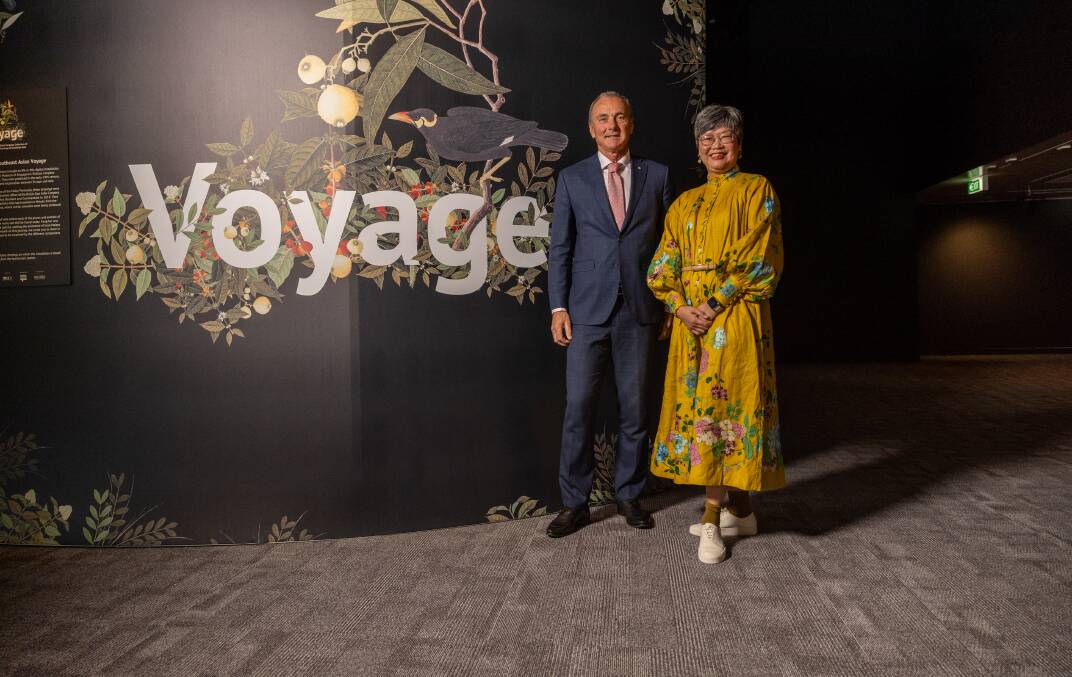There is something apt about the name of the National Museum of Australia's latest exhibition.
An exploration of early 19th-century drawings of animals and plants, Voyage is the latest exhibition to make its way to the capital from the National Museum of Singapore. And just as the latest presentation of these artworks has seen them take the voyage to Australia, they also started their life as a byproduct of exploration and travel.
Voyage features a set of 477 watercolour drawings commissioned by William Farquhar, an officer of the British East India Company who became Singapore's first resident and commandant in 1819. The title Voyage references the British India Company's exploration in Southeast Asia.
However, these 200-year-old artworks have been given a 21st-century treatment. Voyage is a digital installation, with 30 of the works transformed into a four-minute animation. The rest of the collection is available for people to explore via touchscreens.
"Presenting the collection in a digitally immersive experience is one way of reaching out to an audience that perhaps may not have come to the museum," National Museum of Singapore director Chung May Khuen said.

"But the other thing that is quite critical ... is the fact that we can showcase more than just 30 to 40 of the original drawings. Because it is a digital experience, you can include all the 477 drawings in a digital format. It helps us to overcome the conservation challenges of having the drawings on display."
Farquhar originally commissioned the artworks from local Chinese artists during his tenure in Melaka, Malaysia (formerly known as Malacca). While his idea was to document nature through scientific drawings, the Chinese artists were trained in the tradition of injecting stories into a picture. It is this part of the artworks' history that inspired Voyage's animation element.
The artworks feature animals such as the rhinoceros hornbill, cowtail stingray, flower crab, Malayan tapir, climbing perch and zebra dove. While some of these will be intriguing to Australians because they are different to our wildlife, others are intriguing because they have since become extinct.

"That's why it is such a valued collection in terms of documentation of the different specimens that used to be present," Ms Chung said.
"Increasingly our audiences are thinking about the importance of sustainability, preservation and as with all museums, the main business is really to ensure that we preserve and document history so that it can be for posterity, as well as to educate our visitors."
During Thursday's opening of Voyage, the National Museum of Australia and Singapore's National Heritage Board - the body that oversees all the country's museums and heritage institutions - renewed their memorandum of understanding. First signed in 2015, it is a formal understanding that the two countries will continue their cooperation when it comes to the sharing of arts and culture.
"This is a celebration of the opening of this multimedia exhibition, but also of the [memorandum of understanding] being renewed," National Museum of Australia director Mat Trinca said.
"It's terrific when you see this series of botanical drawings from the 19th century brought to life in the multimedia show and then explore the collection afterwards. And the links to the work we do here with something like Great Southern Land. It deals with this relationship that we have with the environment."
Voyage is at the National Museum of Australia until November 5.







